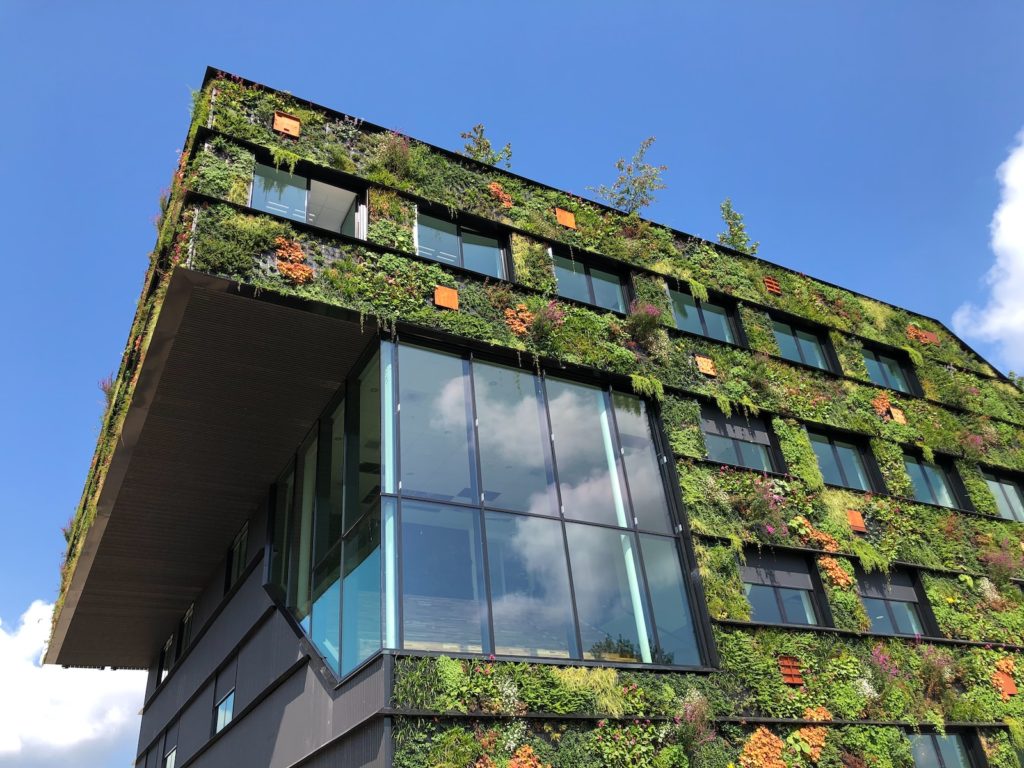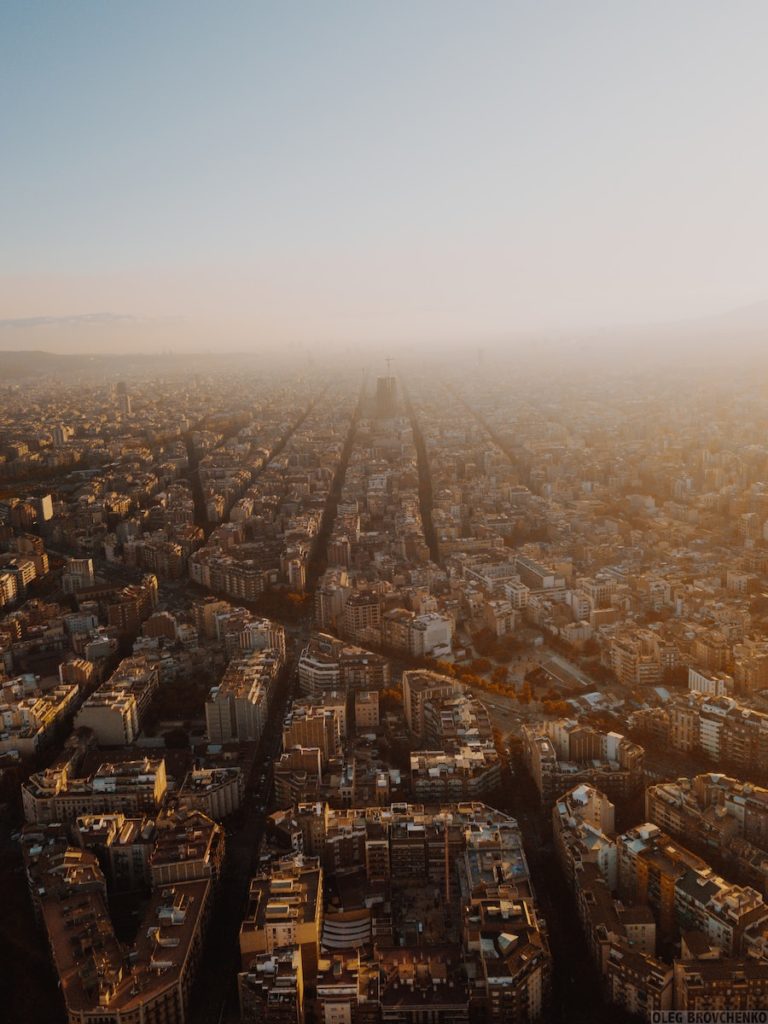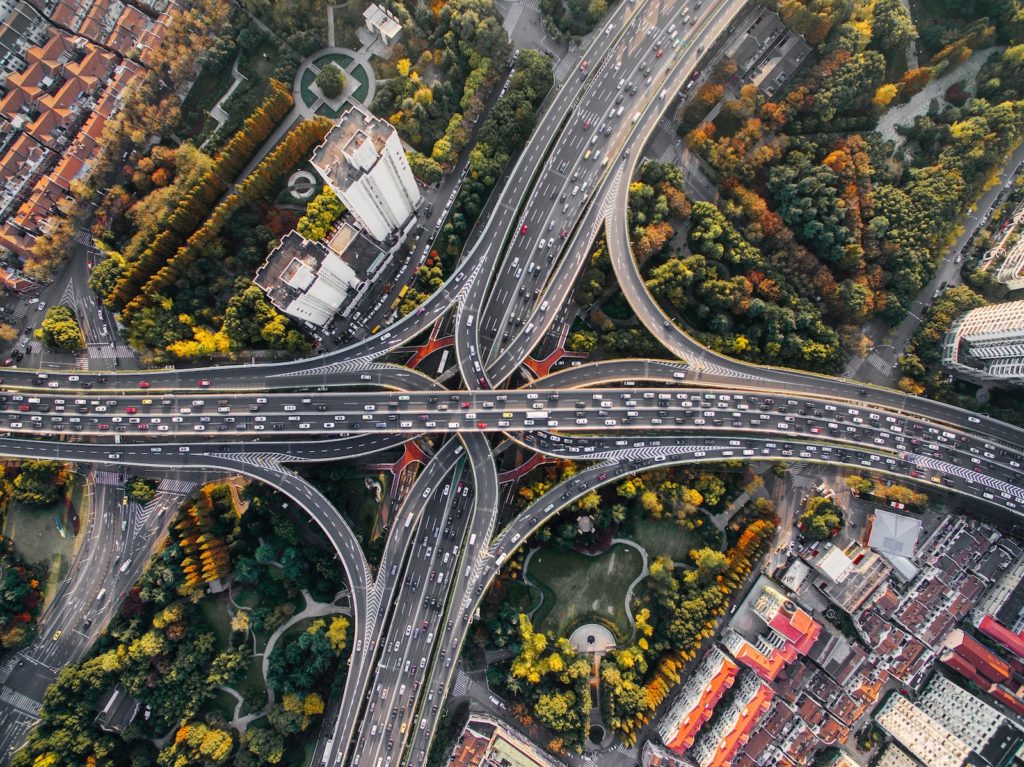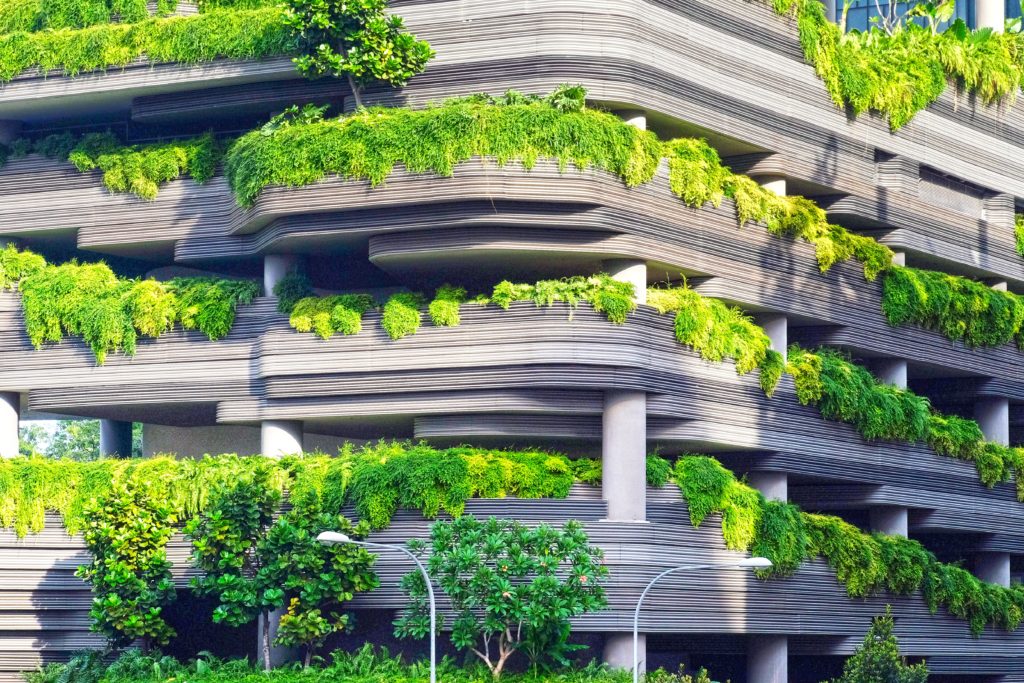Imagine living in a city filled with lush parks, vibrant trees, and an abundance of green spaces. Not only would it provide a refreshing escape from the concrete jungle, but it would also offer a myriad of benefits for both the environment and its residents. This article explores the importance of integrating green infrastructure into urban planning, revealing how incorporating nature into our cities can enhance sustainability, promote better health and well-being, and create more livable communities. By understanding the significance of green spaces, trees, and vegetation in urban design, we can pave the way for a greener and more sustainable future.

The Economic Benefits of Green Infrastructure
Improved Property Values
Incorporating green infrastructure, such as parks, gardens, and street trees, into urban planning has been shown to have a positive impact on property values. Research has consistently indicated that properties located near green spaces are more desirable and sell at higher prices compared to those without these amenities. The presence of green infrastructure not only enhances the aesthetic appeal of a neighborhood but also improves the overall quality of life for residents. This increased demand for properties near green infrastructure can lead to a boost in property values, benefiting homeowners and contributing to economic growth within the community.
Cost Savings on Energy and Water
Green infrastructure plays a crucial role in reducing energy consumption and water usage in urban areas. Vegetation, such as trees and green roofs, provides natural insulation, helping to regulate temperatures and reduce the need for air conditioning during the hot summer months. By providing shade and reducing heat absorption, trees can lower cooling costs for nearby buildings. Additionally, green infrastructure helps to manage stormwater runoff by absorbing and filtering rainwater, reducing the burden on drainage systems, and potentially lowering infrastructure and maintenance costs. These cost savings on energy and water can have a significant economic impact on both individuals and municipalities, leading to reduced utility bills and increased funds for other community investments.
Job Creation
The implementation and maintenance of green infrastructure projects can create a significant number of jobs in various sectors. From the initial planning and design stages to construction and ongoing maintenance, green infrastructure projects require a diverse range of skills and expertise. The installation and maintenance of green roofs, for example, can provide employment opportunities for roofers and landscapers. Similarly, the establishment and management of urban gardens and parks can create jobs in horticulture and park maintenance. These job opportunities not only stimulate local economies but also contribute to the growth of sustainable industries, supporting the shift towards a greener and more resilient workforce.
The Environmental Benefits of Green Infrastructure
Reduced Urban Heat Island Effect
The urban heat island effect refers to the phenomenon where urban areas experience higher temperatures than surrounding rural areas due to the abundance of concrete, asphalt, and other heat-absorbing materials. Green infrastructure, such as parks, green roofs, and street trees, can mitigate the urban heat island effect by providing shade, evapotranspiration, and cooling through natural processes. Trees, in particular, offer substantial shade and can significantly reduce surface and air temperatures in their vicinity. By incorporating green infrastructure into urban planning, cities can effectively mitigate the urban heat island effect, creating more comfortable and livable environments for their residents.
Improved Air Quality
Green infrastructure plays a crucial role in improving air quality in urban areas. Vegetation, particularly trees and green walls, helps to filter out pollutants such as fine particulate matter and absorb harmful gases, including carbon dioxide and nitrogen dioxide. Through photosynthesis, plants and trees convert carbon dioxide into oxygen, leading to increased oxygen levels and reduced air pollution. Additionally, green spaces act as buffers against noise pollution, providing a more peaceful and tranquil environment for residents. Improved air quality not only enhances the quality of life for urban dwellers but also reduces the burden of healthcare costs associated with air pollution-related illnesses, resulting in significant economic savings for communities.
Water Management and Quality
Green infrastructure plays a vital role in effectively managing and improving water quality in urban areas. Traditional concrete infrastructure contributes to stormwater runoff, which can overwhelm drainage systems and lead to water pollution by carrying pollutants into streams, rivers, and other water bodies. Green infrastructure, such as rain gardens, bioswales, and wetlands, helps to capture and absorb rainfall, reducing the volume and velocity of stormwater runoff. This natural filtration process allows rainwater to be absorbed into the ground, replenishing groundwater resources and reducing the risk of flooding. Furthermore, green infrastructure improves water quality by filtering pollutants and enhancing the natural treatment of stormwater through biological processes. By incorporating green infrastructure into urban planning, cities can effectively manage their water resources, protect aquatic ecosystems, and improve the overall resiliency of their communities.

The Social Benefits of Green Infrastructure
Enhanced Health and Well-being
Access to green spaces and nature has been shown to positively impact physical and mental health. Spending time in green environments has been associated with reduced stress, improved mood, and increased levels of physical activity. Green infrastructure provides opportunities for recreational activities, such as walking, jogging, and cycling, promoting an active lifestyle and contributing to overall health and well-being. Additionally, exposure to nature has been linked to improved cognitive function and attention restoration, particularly important for children. Incorporating green spaces and parks into urban planning ensures that residents have convenient access to nature, leading to enhanced health outcomes and improved quality of life.
Increased Social Interaction and Community Engagement
Green infrastructure promotes social interaction and community engagement by creating gathering spaces and places for people to congregate. Parks, gardens, and public squares serve as social hubs, bringing people together and fostering a sense of belonging and community pride. They provide opportunities for organized events, such as festivals, picnics, and concerts, which facilitate social connections and cultural exchange. In addition, community gardens and urban farms encourage collaboration and shared responsibilities, creating a sense of community ownership and pride. By incorporating green infrastructure into urban planning, cities can create vibrant and inclusive public spaces that promote social cohesion and strengthen community ties.
Improved Mental Health
Access to green spaces has been consistently associated with improved mental health outcomes. The presence of nature, trees, and greenery has been shown to reduce symptoms of anxiety, depression, and stress. Being in a natural environment has a calming effect on the mind and can provide respite from the demands and pressures of urban living. Green spaces offer opportunities for relaxation, introspection, and escape from the constant stimulation of urban environments. By incorporating green infrastructure into urban planning, cities can create environments that support mental health and well-being, ensuring that residents have access to spaces that offer tranquility and restoration.
The Sustainable Development Benefits of Green Infrastructure
Climate Change Mitigation and Adaptation
Green infrastructure plays a vital role in mitigating and adapting to the impacts of climate change. Trees and vegetation act as natural carbon sinks, absorbing and storing carbon dioxide emissions from the atmosphere. By increasing the tree canopy and implementing green infrastructure, cities can effectively reduce their carbon footprint and contribute to global climate change mitigation efforts. Furthermore, green infrastructure helps to adapt cities to the changing climate by providing natural solutions for heat regulation, stormwater management, and flood protection. By incorporating green infrastructure into urban planning, cities can build resilience and adaptability, ensuring the long-term viability and sustainability of their communities.
Biodiversity Conservation and Habitat Creation
Green infrastructure provides essential habitats for wildlife and contributes to biodiversity conservation in urban areas. By creating green spaces, cities can provide alternative habitats for plant and animal species that may have been displaced by urban development. Parks, gardens, and green corridors serve as valuable ecological networks, allowing for the movement of wildlife and promoting genetic diversity. Additionally, the inclusion of native plant species in green infrastructure projects supports pollinators, such as bees and butterflies, essential for the reproduction of plants and the maintenance of ecosystems. By integrating green infrastructure into urban planning, cities can support biodiversity conservation and enhance the ecological value of their landscapes.
Resource Conservation
Green infrastructure plays a critical role in resource conservation by reducing the demand for energy, water, and raw materials. As mentioned earlier, green infrastructure helps to reduce energy consumption by providing natural cooling and insulation. By relying less on air conditioning and heating, cities can decrease their reliance on fossil fuels and minimize greenhouse gas emissions. Additionally, green infrastructure supports water conservation by capturing and reusing rainwater, reducing the need for freshwater supply and lowering the strain on water resources. By incorporating green infrastructure into urban planning, cities can promote resource efficiency and contribute to the long-term sustainability of their communities.

The Role of Green Infrastructure in Urban Planning
Integration with Urban Infrastructure
Green infrastructure should be seamlessly integrated with existing urban infrastructure to maximize its benefits. Streetscapes, sidewalks, and public spaces can be designed to incorporate green elements, such as street trees, green roofs, and permeable pavements. By considering green infrastructure as an integral part of urban design, cities can create cohesive and harmonious environments that prioritize the well-being of residents and the sustainability of the community as a whole.
Green Roofs and Walls
Green roofs and walls are effective ways to incorporate green infrastructure in densely populated urban areas with limited space. Green roofs involve planting vegetation on the rooftops of buildings to provide insulation, reduce stormwater runoff, and improve air quality. Green walls, also known as living walls or vertical gardens, are vertical structures covered in vegetation that help regulate temperature, improve air quality, and provide aesthetic value. These innovative approaches allow cities to maximize the benefits of green infrastructure while minimizing the use of valuable land.
Urban Agriculture
Urban agriculture, including community gardens, rooftop farms, and indoor hydroponic systems, is an essential component of green infrastructure. It provides opportunities for food production, promotes local and sustainable agriculture, and improves food security in urban areas. Urban agriculture also supports social engagement and education by providing opportunities for community involvement and teaching sustainable practices. By incorporating urban agriculture into urban planning, cities can enhance the resilience and self-sufficiency of their communities and create connections between residents and their food sources.
Successful Examples of Green Infrastructure Projects
High Line Park, New York City
The High Line Park in New York City is an excellent example of the successful integration of green infrastructure into urban planning. This elevated park was created on a disused railway track, transforming it into a vibrant green space that provides recreational opportunities, supports biodiversity, and enhances the aesthetic value of the surrounding area. The High Line Park has become a popular destination for locals and tourists alike, boosting nearby property values and contributing to local economic growth.
Millennium Park, Chicago
Millennium Park in Chicago is another notable example of the successful implementation of green infrastructure in urban planning. This iconic park features extensive green spaces, including the famous Cloud Gate sculpture and the Jay Pritzker Pavilion. Millennium Park has revitalized the downtown area, attracting visitors and residents alike and contributing to the economic vitality of the city. The park’s integration of green infrastructure has created a beautiful and sustainable public space that enhances the quality of life for Chicagoans.
Cheonggyecheon Stream, Seoul
The Cheonggyecheon Stream restoration project in Seoul, South Korea, transformed an urban expressway into a vibrant green corridor. By demolishing the elevated highway and restoring the natural stream, the project created a beautiful urban oasis that provides recreational opportunities, improves air quality, and enhances the aesthetic appeal of the city. The Cheonggyecheon Stream project has become a popular destination for residents and tourists, contributing to increased property values and economic development in the surrounding area.
The Challenges and Limitations of Green Infrastructure
Limited Space and High Cost
One of the main challenges of implementing green infrastructure in urban planning is the limited availability of space. As urban areas become denser and more built-up, finding suitable land for green spaces can be a significant obstacle. Additionally, the upfront costs of implementing green infrastructure projects can be high, including site preparation, installation, and maintenance expenses. These financial constraints can deter some communities from investing in green infrastructure, especially those with limited resources or competing priorities.
Maintenance and Longevity
Green infrastructure projects require ongoing maintenance to ensure their longevity and effectiveness. Regular care is necessary for vegetation, including watering, pruning, and pest control. Without proper maintenance, green infrastructure can become overgrown, lose its aesthetic appeal, and potentially become a liability. Communities must allocate sufficient resources for the long-term maintenance and upkeep of green infrastructure projects to maximize their benefits.
Resistance to Change
Integrating green infrastructure into urban planning often requires a shift in mindset and a willingness to embrace change. Some stakeholders, including developers, policymakers, and residents, may be resistant to the inclusion of green elements, fearing potential disruptions or changes to the status quo. Overcoming this resistance and promoting the value and benefits of green infrastructure requires effective communication, education, and community engagement.
Key Strategies for Implementing Green Infrastructure
Collaboration and Partnerships
Implementing successful green infrastructure projects requires collaboration and partnerships between various stakeholders, including government agencies, private developers, community organizations, and residents. By working together, these stakeholders can leverage their expertise, resources, and influence to ensure the successful implementation and maintenance of green infrastructure projects. Collaboration promotes shared ownership and fosters a sense of community pride and engagement.
Policy and Planning Frameworks
Policy and planning frameworks play a crucial role in promoting the integration of green infrastructure into urban planning. Local governments can adopt policies and regulations that incentivize the inclusion of green elements in development projects, such as offering tax incentives, density bonuses, or expedited permitting processes for green infrastructure initiatives. By incorporating green infrastructure into planning frameworks, cities can clearly communicate their commitment to sustainability and create an enabling environment for green infrastructure development.
Education and Awareness
Raising awareness and educating the public about the benefits of green infrastructure is essential for its successful implementation and acceptance. By conducting community outreach programs, organizing educational workshops, and providing resources and information, cities can empower residents and stakeholders to actively participate in the planning, implementation, and maintenance of green infrastructure projects. Education and awareness allow communities to understand the value of green infrastructure and foster a sense of stewardship and responsibility towards these spaces.
The Future of Green Infrastructure in Urban Planning
Innovation and Technology
The future of green infrastructure in urban planning lies in innovation and technology. Advancements in design, materials, and construction techniques are continuously being explored to enhance the efficiency and effectiveness of green infrastructure projects. For example, the development of smart irrigation systems can optimize water usage in green spaces, ensuring that plants receive the right amount of water at the right time. Similarly, the use of data-driven approaches, such as remote sensing and predictive modeling, can help identify optimal locations for green infrastructure and maximize its benefits. By embracing innovation and technology, cities can further enhance the impact and sustainability of green infrastructure projects.
Inclusive and Equitable Design
As cities become more diverse and inclusive, it is crucial to ensure that green infrastructure projects are designed to benefit all residents. Equity considerations, such as providing equal access to green spaces for all socioeconomic groups, addressing environmental injustice, and incorporating cultural elements into design, should be central to urban planning efforts. By prioritizing inclusive and equitable design, cities can create green spaces that cater to the needs and aspirations of all residents, fostering social cohesion and a sense of belonging.
Resilience Planning
In light of the increasing frequency and intensity of climate-related events, resilience planning is paramount in urban design. Green infrastructure plays a vital role in building resilience by providing natural solutions for climate change adaptation, such as flood protection, heat reduction, and stormwater management. Incorporating green infrastructure into resilience planning allows cities to better withstand and recover from extreme weather events, ensuring the long-term sustainability and well-being of their communities.
Conclusion
Green infrastructure plays a critical role in urban planning, offering a multitude of economic, environmental, social, and sustainable development benefits. From improved property values and cost savings on energy and water to enhanced health and well-being and climate change adaptation, green infrastructure has proven to be a valuable asset for cities worldwide. By incorporating green infrastructure into urban planning, cities can create livable, sustainable, and resilient environments that support the well-being and prosperity of their residents. Through collaboration, policy frameworks, education, and a future-oriented mindset, cities can harness the full potential of green infrastructure and shape a greener, more sustainable future.
Additional Information and Resources for Economic Benefits of Green Infrastructure
https://www.epa.gov/sites/default/files/2015-10/documents/cnt-lancaster-report-508_1.pdf
https://cnt.org/sites/default/files/publications/CNT_Value-of-Green-Infrastructure.pdf


